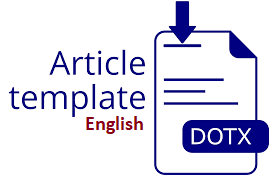Analisa Usability Testing Website Antara Information System Pada LKBN Antara
DOI:
https://doi.org/10.30865/resolusi.v4i4.1597Keywords:
Analysis of Quality; Website Antara Inforrmation System; Usability Testing; SPSS; WebsiteAbstract
In facing the digital era, Perum LKBN Antara continues to innovate to remain a relevant source of information. The presence of online platforms, news applications, and integration with social media allows Perum LKBN Antara to reach a wider and more diverse audience. Information technology support and modern content management systems are key in maintaining speed and accuracy in delivering news. In addition, in internal aspects, Perum LKBN Antara has successfully implemented an integrated information system, one of which is in the financial sector using the Antara Information System website. The Antara Information System website contributes to organizational efficiency by automating processes related to website management. The integrated Enterprise Resource Planning (ERP) system helps combine back-end operations, such as finance, human resources, and inventory management, with the website. This integration reduces manual work, reduces errors, and improves overall operational efficiency. This study measures the quality of the Antara Information System website through Usability Testing dimensions (understandability, learnability, operability, attractiveness) and user satisfaction variables, namely LKBN Antara employees. The data collection method uses primary data in the form of a questionnaire distributed to 109 respondents. Data processing is done using SPSS. Based on data processing, it can be seen that user perceptions of the variables of understandability, learnability, operability, attractiveness are included in the very good category. Based on the research results, it is found that there is only an influence of the attractiveness variable on user satisfaction. From the research results, it can be seen that the understandability variable provides the largest contribution of 87.22% of the other variables.
Downloads
References
A. Rachmawaty, “Optimasi Media Sosial Dalam Meningkatkan Penjualan di Masa Pembatasan Sosial Berskala Besar,” Temat. J. Teknol. Inf. Komun., vol. 8, no. 1, pp. 29–44, 2021, [Online]. Available: https://jurnal.plb.ac.id/index.php/tematik/article/view/535.
M. D. Fahmi, H. M. Az-Zahra, and R. K. Dewi, “Perbaikan Usability Aplikasi Pemesanan Tiket Bioskop Menggunakan Metode Usability Testing dan USE Questionnaire,” J. Pengemb. Teknol. Inf. dan Ilmu Komput., vol. 2, no. 12, pp. 6653–6660, 2018, [Online]. Available: http://j-ptiik.ub.ac.id.
Sugiyono, Metode Penelitian Kuantitatif Kualitatif R&B, Bandung: Alfabeta, 2015.
R. Taufiq, Sistem Informasi Manajemen; Konsep Dasar, Analisis dan Metode Pengembangan, Yogyakarta: Graha Ilmu, 2013.
Algifari, Mengukur Kualitas Layanan, Yogyakarta: BPFE, 2016.
I. Ghozali, Aplikasi Analisis Multivariate Dengan Program SPSS, Semarang: Badan Penerbit Universitas Diponegoro, 2015.
B. Y. R. Kurniawan, Analisis Regresi: Dasar dan Penerapannya dengan R, Jakarta: Kharisma Putra Utama, 2016.
Creswell, J. W. Research Design: Qualitative, Quantitative, and Mixed Methods Approaches (4th ed.). Thousand Oaks, CA: SAGE Publications, 2014.
Kerlinger, F. N., & Lee, H. B. Foundations of Behavioral Research (4th ed.). Fort Worth, TX: Harcourt College Publishers, 2013.
Denzin, N. K., & Lincoln, Y. S. (Eds.). The SAGE Handbook of Qualitative Research. Thousand Oaks, CA: Sage Publications, 2018.
N. A. Murti, “Analisis Usability Testing Pada Aplikasi Transportasi Online Untuk Mengukur Kepuasan Pengguna,” JSiI (Jurnal Sist. Informasi), vol. 7, no. 1, p. 19, 2020, doi: 10.30656/jsii.v7i1.2102.
A. Supriyatna, “Penerapan Usability Testing Untuk Pengukuran,” J. Ilm. Teknol. - Inf. dan Sains Vol., vol. 8, no. 1, pp. 1–16, 2018.
V. P. Sabandar and H. B. Santoso, “Evaluasi Aplikasi Media Pembelajaran Statistika Dasar Menggunakan Metode Usability Testing,” Teknika, vol. 7, no. 1, pp. 50–59, 2018, doi: 10.34148/teknika.v7i1.81.
H. P. Nugroho and J. Lestyowati, “Analisis Tingkat Kepuasan dan Kepentingan Pengguna Aplikasi SAKTI dengan PIECES Framework,” Indones. Treas. Rev. J. Perbendaharaan Keuang. Negara dan Kebijak. Publik, vol. 5, no. 2, pp. 93–104, 2020, doi: 10.33105/itrev.v5i2.188.
J. Sistem et al., “Evaluasi Kualitas Website Pemerintah Daerah Dengan Menggunakan Webqual (Studi Kasus Pada Kabupaten Ogan Ilir),” J. Sist. Inf., vol. 4, no. 2, pp. 488–502, 2021, [Online]. Available: http://ejournal.unsri.ac.id/index.php/jsi/index.
M. Djaelani and D. Darmawan, “Pengukuran Tingkat Kepuasan Pengguna Jasa Parkir di Pusat Pembelanjaan Royal Plaza Surabaya,” Ekon. Keuangan, Investasi dan Syariah, vol. 3, no. 2, pp. 307–311, 2021, doi: 10.47065/ekuitas.v3i2.1167.
A. Winarni and W. Riska, “Analisis Kualitas Website Dan Kepuasan Nasabah Terhadap Website Pt. Bank Sinarmas Tbk Menggunakan Metode Webqual 4.0,” J. Bangkit Indones., vol. 9, no. 1, pp. 6–12, 2020, doi: 10.52771/bangkitindonesia.v9i1.106.
R. D. Munthe, K. C. Brata, and L. Fanani, “Analisis User Experience Aplikasi Mobile Facebook (Studi Kasus pada Mahasiswa Universitas Brawijaya),” J. Pengemb. Teknol. Inf. dan Ilmu Komput., vol. 2, no. 7, pp. 2679–2688, 2018, [Online]. Available: https://j-ptiik.ub.ac.id/index.php/j-ptiik/article/view/1672.
A. P. N. Nurdin, “Analisa Dan Implementasi Kriptografi Pada Pesan Rahasia,” Jesik, vol. 3, no. 1, pp. 1–11, 2018, [Online]. Available: nnurdin69@gmail.com
Monalisa, “Analisa Kualitas Sistem Informasi E-Raport Pada Sekolah Smpn 5 Kota Tangerang Terhadap Kepuasan Pengguna Menggunakan Metode Webqual 4.0,” INFOTECH J., pp. 10–21, 2021, doi: 10.31949/infotech.v7i1.908.
Bila bermanfaat silahkan share artikel ini
Berikan Komentar Anda terhadap artikel Analisa Usability Testing Website Antara Information System Pada LKBN Antara
ARTICLE HISTORY
Issue
Section
Copyright (c) 2024 Besus Maula Sulthon, Tarsudin

This work is licensed under a Creative Commons Attribution 4.0 International License.
Authors who publish with this journal agree to the following terms:
- Authors retain copyright and grant the journal right of first publication with the work simultaneously licensed under Creative Commons Attribution 4.0 International License that allows others to share the work with an acknowledgment of the work's authorship and initial publication in this journal.
- Authors are able to enter into separate, additional contractual arrangements for the non-exclusive distribution of the journal's published version of the work (e.g., post it to an institutional repository or publish it in a book), with an acknowledgment of its initial publication in this journal.
- Authors are permitted and encouraged to post their work online (e.g., in institutional repositories or on their website) prior to and during the submission process, as it can lead to productive exchanges, as well as earlier and greater citation of published work (Refer to The Effect of Open Access).















